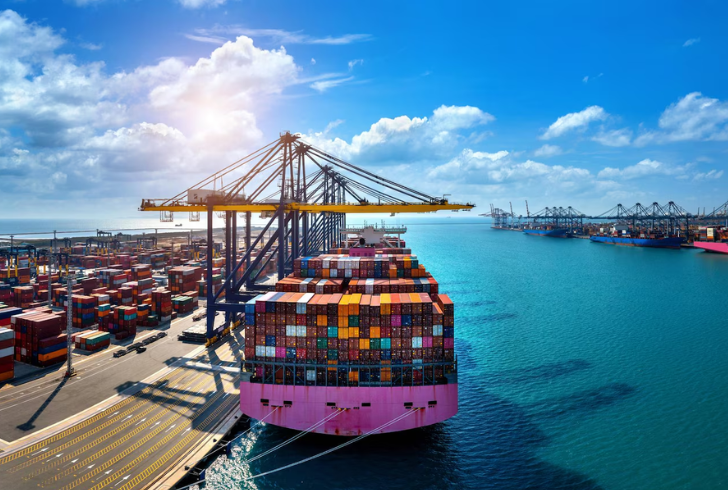California’s economy is now officially the fourth largest in the world, surpassing that of Japan. The U.S. Bureau of Economic Analysis reported that the state’s GDP reached $4.1 trillion in 2024. Meanwhile, Japan’s economy stood at $4.02 trillion, based on data from the International Monetary Fund. Only the U.S., China, and Germany rank higher.
This shift isn’t just a number change — it reflects how fast California continues to grow. The state outpaced the world’s top economies with a 6% growth rate in 2024, a clear signal of its powerful momentum.
California’s Strength Comes from Innovation
California thrives because it embraces progress. Its growth stems from technology, real estate, entertainment, finance, and agriculture. These sectors work together to build a foundation that continues to strengthen every year.
Governor Gavin Newsom praised the state’s direction. He noted that California is “not just keeping up — it’s setting the pace.” He credited the state’s focus on people, innovation, and sustainability as core drivers of its success.
International Trade Powers Local Growth

A major factor in California’s economic growth is trade. In 2024, the state’s two-way trade was valued at around $675 billion. Mexico, Canada, and China stood out as its top partners. These three nations alone made up more than 40% of California’s imports, which totaled over $491 billion.
Every product shipped, every container unloaded, and every service exchanged fuels jobs, business expansion, and community development. That level of economic activity creates a ripple effect that touches every corner of the state.
Tariff Policies Threaten That Progress
Despite its strong numbers, California faces a serious threat — federal tariffs. Governor Newsom publicly denounced what he called irresponsible and damaging trade practices. He emphasized that these decisions put California families and businesses at risk.
In response, the state filed a federal lawsuit on April 16, challenging the legality of these tariffs. The suit argues that former President Donald Trump acted outside his authority by applying tariffs on Mexico, Canada, and China, as well as a baseline 10% tariff on all global imports.
Newsom warned that these measures had caused “irreparable harm.” He pointed to rising costs, broken supply chains, and billions of dollars in damages.
Lawsuit Challenges Presidential Trade Authority
The application of the International Economic Emergency Powers Act (IEEPA) is particularly contested in the complaint. While this law gives the president broad emergency powers, it also requires Congressional oversight. The suit claims this critical step was ignored.
Through the IEEPA, presidents can freeze assets, control exports, and regulate foreign transactions during a national emergency. However, the legal challenge states that these powers must be used with transparency and clear communication with Congress — both of which were missing in this case.
Why These Tariffs Hurt California
Tariffs affect actual individuals, despite their abstract nature. These added costs impact industries that keep the state’s economy running.
Here’s how the damage unfolds:
1. Technology firms pay more for imported components.
2. Farmers struggle to compete after trade partners retaliate.
3. Retailers and manufacturers lose money due to higher shipping and material costs.
This chain reaction lowers profits, limits hiring, and raises prices for consumers. Over time, it slows down economic growth — the very thing California worked so hard to build.
More States Back California’s Legal Action
California isn’t fighting alone. Twelve other states joined the lawsuit, calling the tariffs unconstitutional. They argue the federal government used emergency powers as a loophole to impose taxes without approval. The White House dismissed these claims, calling them politically motivated.
Still, this growing coalition of states shows how much concern exists about unchecked federal trade actions.
The Engines Behind California’s Economic Rise

Multiple industries continue to push California forward:
1. Technology – Companies like Apple, Google, and Tesla drive global innovation.
2. Entertainment – With hits like “Barbie”, “Oppenheimer”, and “Everything Everywhere All At Once”, Hollywood keeps culture moving and revenue flowing.
3. Agriculture – California feeds the world, exporting almonds, grapes, and dairy on a massive scale.
4. Finance and Real Estate – These sectors bring in billions in capital and taxes.
Each part contributes to a larger ecosystem that fuels California’s steady rise.
What This Means for the Global Economy
This shift reshapes global rankings. It also highlights the influence of sub-national economies like California. As the state continues to lead, it will likely shape future trade policies, climate actions, and tech innovation on a global scale.
To protect that influence, leaders must defend the systems that built it, especially open, fair trade, and innovation-friendly regulations.
Moving Forward with Strength and Focus
California’s rise to the fourth spot globally isn’t just a headline — it’s a reflection of decades of strategic planning and bold decisions. That momentum must continue. Smart leadership, strong global relationships, and responsible policies will keep California ahead of the curve.
Economic leadership doesn’t come easily. But with determination and a forward-looking approach, California shows how it’s done.





